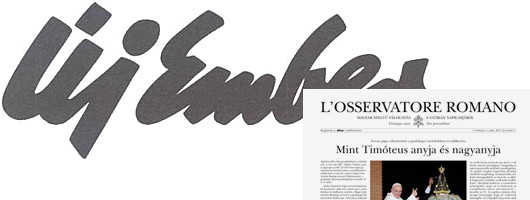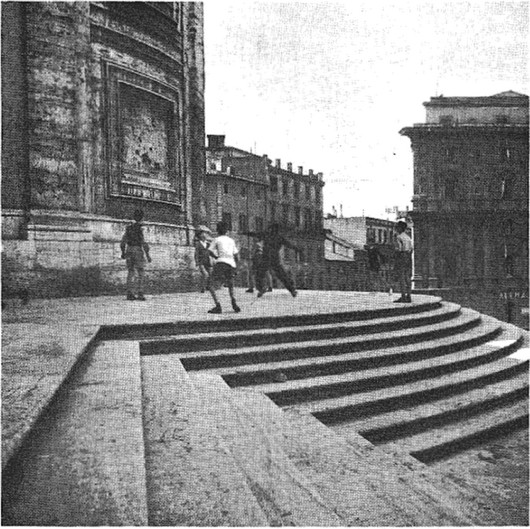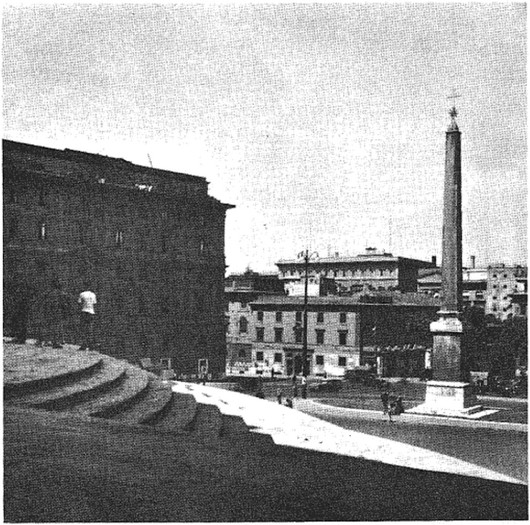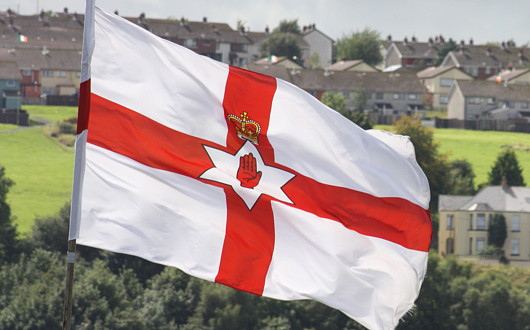2013 December
About Andrew Cusack
 Writer, web designer, etc.; born in New York; educated in Argentina, Scotland, and South Africa; now based in London.
Writer, web designer, etc.; born in New York; educated in Argentina, Scotland, and South Africa; now based in London. read more
News
Blogs
Reviews & Periodicals
Arts & Design
World
France
Mitteleuropa
Knickerbockers
Argentina
The Levant
Africa
Cape of Good Hope
Netherlands
Scandinavia
Québec
India
Muscovy
Germany
Academica
Two Flags Based on the French Tricolour
The French tricolour is one of the most influential flags in history, inspiring most prominently perhaps the Italian and Irish flags, but also dozens other, including the nationalist triband flags (like those of Germany, Russia, etc.). Indeed, the national flags of nearly sixty UN member states are based on these vertical or horizontal stripe combinations.
While long identified with revolution, republicanism, and nationalism, the French flag originally represented a combination of the blue and red of Paris — the colours of Saint Martin and Saint Denis — with the white of the French monarchy. Two (non-national) flags based directly on the French tricolour are those of the Acadians in North America and of Franschhoek in South Africa. (more…)
L’Osservatore Romano goes Hungarian

Magyarophiles will be pleased to learn that L’Osservatore Romano, the Vatican newspaper, will begin appearing in Hungarian. The new edition will appear every other week as a four-page insert into Új Ember, the Hungarian Catholic weekly founded in 1945. “We are a small editorial staff,” Balázs Rátkai, editor-in-chief of the weekly, told L’Osservatore.
“However, our intention is to probe and to make our readers think. The collaboration with the Vatican daily is of historic importance for the life of the weekly and of the entire local Church; it not only brings the Universal Church and the Pope closer to us; it will also enrich readers, and through them all of Hungarian society, with new thoughts, opinions and answers.”
Printed as a daily broadsheet in Italian, the Vatican newspaper also has weekly tabloid editions in French, Spanish, English, German, and Portuguese, as well as a monthly version in Polish.
Kolmanskop
Ghost town of the Namib
NAMIBIA IS A LAND that fascinates me, which is perhaps surprising. This arid land is sparsely populated — just 6.6 people per square mile — but its deserts are believed to be the oldest in the world. Those who haven’t experienced its harsh beauty may wonder why this land has attracted its odd and varied collection of peoples, but here the Ovambo, the Kavango, the Herero, the Afrikaner, the German, and the Bushman all call home.
I have already written somewhat about Lüderitz and beyond it the Diaz Point. As you speed down the B4 from Keetmanshoop to Lüderitz — a four-hour drive passing through just the one small village of Aus — you can turn off just before you reach the coastal town and pay a visit to the eerily ghost town of Kolmanskop: Kolmannskuppe in the original German. (more…)
Football at S. Maria Maggiore

The enormous church of S. Maria Maggiore stands on one of Rome’s seven famous hills. Originally the site was very unkempt, as can be seen in an old fresco painting in the Vatican. Later, the slopes were smoothed and articulated with a flight of steps up to the apse of the basilica. The many tourists who are brought to the church on sight-seeing tours hardly notice the unique character of the surroundings. They simply check off one of the starred numbers in their guide-books and hasten on to the next one. But they do not experience the place in the way some boys I saw there a few years ago did. I imagine they were pupils from a nearby monastery school. They had a recess at eleven o’clock and employed the time playing a very special kind of ball game on the broad terrace at the top of the stairs. It was apparently a kind of football but they also utilised the wall in the game, as in squash — a curved wall, which they played against with great virtuousity. When the ball was out, it was most decidedly out, bouncing down all the steps and rolling several hundred feet further on with an eager boy rushing after it, in and out among motor cars and Vespas down near the great obelisk.
I do not claim that these Italian youngsters learned more about architecture than the tourists did. But quite unconsciously they experienced certain basic elements of architecture: the horizontal planes and the vertical walls above the slopes. And they learned to play on these elements. As I sat in the shade watching them, I sensed the whole three-dimensional composition as never before. At a quarter past eleven the boys dashed off, shouting and laughing. The great basilica stood once more in silent grandeur.

Flags, Northern Ireland, and the Union

Flags have been in the news of late, perhaps as a late hangover of the disruptive protests over Belfast City Council’s decision to fly the Union Jack from Belfast City Hall only on the United Kingdom’s designated flag-flying days. Ironically, this would have brought the Six Counties further in line with normal British practice, but disgruntled unionists viewed it as a diminution of “their” flag and a bit of a fracas ensued with the once-traditional death threats and intimidation returning.
The BBC raised the issue of how Scottish independence might affect the Union Jack. (Pedants only refer to the British flag as the “Union flag”, but the Flag Institute points out both terms are perfectly acceptable). Scottish independence would have no automatic effect on the flag whatsoever, but it has provoked a round of speculation over what changes, if any, should be made to the Union flag.
Then Richard Haass, the American diplomat charged with chairing the inter-party talks on unresolved issues in the Six Counties, waded into matters vexillological when he wrote to party leaders seeking their views on the possibility of a new flag for Northern Ireland. (more…)
Search
Instagram: @andcusack
Click here for my Instagram photos.Most Recent Posts
- Sag Harbor Cinema March 26, 2025
- Teutonic Takeover March 10, 2025
- Katalin Bánffy-Jelen, R.I.P. March 3, 2025
- Substack Cusackiensis March 3, 2025
- In the Courts of the Lord February 13, 2025
Most Recent Comments
Book Wishlist
Monthly Archives
Categories


